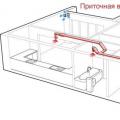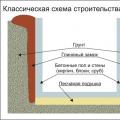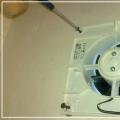Cellar owners often complain about the humidity in it. Usually this problem is associated with violations made during construction. How to reduce humidity in the cellar is a concern for many Russians who store their vegetables in cellars and cellars.
In basements and cellars, excessive moisture often appears. If time does not begin to take measures to eliminate it, then a fungus will appear, and then mold.
For obvious reasons, moisture and dampness are unacceptable in cellars and cellars. In a room with moist air, mold and fungus appear. It is impossible to store vegetables in such a basement, and if a wet room is located in the basement, this can adversely affect the integrity of the entire building.
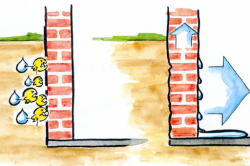
One of the causes of humidity and dampness is moisture penetrating into the room through the walls and subsequently accumulating on the floor. In the process of its evaporation, the humidity of the air increases many times over.
If the cellar or basement is located in a private house, insufficient insulation of the building may be the cause of dampness. At low temperatures, water penetrates through the joints in the walls of the house into the basement.
Groundwater may also be the cause. This is possible with poor waterproofing of the floor.
Moisture removal methods
There are various ways to reduce the humidity in the basement. But first, check the condition of the basement waterproofing. If it does not cope with the task, then it must be redone. This is often not the cheapest option.
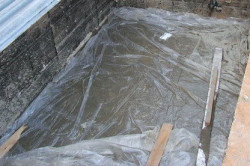
The most inexpensive way in which the moisture in the cellar can be removed is as follows:
- purchase plastic wrap, you can use the old one, as long as it is intact. You will also need a shovel, trowel and clay. If the floor of your cellar is clay, then use it;
- remove a 5 cm layer of clay floor, level and tamp the resulting surface. On top of it, carefully lay two layers of polyethylene. Pour a clay layer on it and carefully tamp it down as well. This must be done carefully so that the film layer does not move. The clay will begin to dry out and the air in the cellar will become drier. Instead of a clay floor, you can make it out of concrete.
Back to index
Additional Causes of Humidity
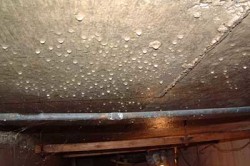
- Often moisture in the cellars appears during the snowmelt season and after precipitation. Pour a layer of sand at the bottom of the cellar, and 10 cm of fine gravel on top. The dampness should be gone. If this does not happen within a year, then make the gravel layer thicker by another 10 cm. The ground water will sink to a lower level, and from there it will no longer be able to rise to the level of the basement or cellar floor.
- The humidity in the basement is significantly affected by the condensate that appears on the walls. You can fight it with the help of a special waterproofing plaster. Plaster the walls of the basement with it - and they will begin to breathe. Condensation will disappear along with dampness. Ready-made waterproofing mixture is sold in stores. You can cook it yourself. Add a waterproofing additive to dry plaster.
- Remove fungus and mold from the walls with a special solution and apply plaster to the wall.
- Moisture in the cellars appears where thin and cold floors are made in them. Make a double floor, in the middle of which lay a layer of roofing material. The humidity in the air will decrease.
- You can fight moisture in the basement with the help of potassium chloride, which quickly absorbs excess moisture. Pour the powder of this substance into jars and place it in the corners of the cellar. This method works well if you have a small cellar.
Back to index
What to do if nothing helps
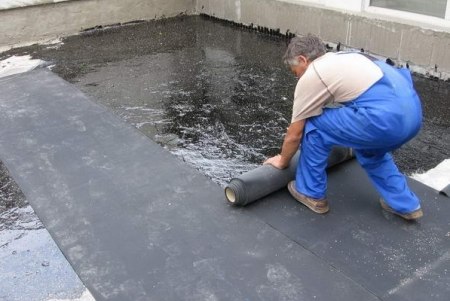
If all these simple methods cannot reduce the humidity in the cellar, then additional waterproofing must be created.
- Start by waterproofing the floor. Cover it with several layers of bitumen. Heat it up with a building hair dryer and lay two layers of roofing material on top. Instead, you can lay waterproofing, it is not exposed to rot and is resistant to mold.
- At the second stage of waterproofing, build additional walls in half a brick. Between them you mount a waterproofing layer. On top of the cellar, make a concrete screed of 10 cm.
Has moisture started to appear on the floor and walls in the basement? What should be done to make it dry and suitable for storing vegetables?
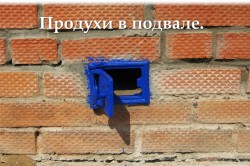
- The first thing you need to do is ventilate the basement regularly by opening it every day. Check ventilation.
- If moisture appears on the walls and floor in the basement in the spring, they must be repaired. On the floor, make a screed of waterproof cement. Carefully inspect the walls, if they have cracks, repair them, and then plaster the walls.
- If possible, dig out the basement walls from the outside. Seal any cracks found with cement mortar. Cover the walls with a layer of bitumen or roofing felt, this will enhance the waterproofing of the basement. You can make a clay castle around its perimeter. In the trench around the basement, lay the clay in layers of 20 cm, carefully tamping. Such a lock will completely block the flow of groundwater and rainwater to the basement walls.
- You can additionally lay drainage pipes along the outer perimeter of the basement, in a trench dug to the depth of the foundation, through which water will be discharged into a drain pit or septic tank.
Is groundwater flooding the basement floor? Dig a hole below the basement floor level. Make a gravel pillow in it, place a container on it with holes drilled in the side walls.
The container must be wrapped with a cloth that passes water well, it will prevent the holes in the container from silting up. Place a float pump in it. Water fills the tank, the float rises and turns on the pump. The water is pumped out, the float drops and the pump turns off. Such a device will allow you to effectively deal with water and humidity in the basement.

